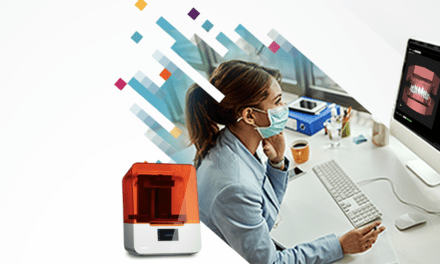Perhaps you are offering Invisalign® (Align Technology Inc, San Jose, Calif) only to simple cases with mild crowding or spacing. Anything else you prefer to go with the tried and true fixed appliances—they are comfortable and familiar. But there are orthodontists offering clear aligners to all of their patients and they are getting results that are just as good as with fixed appliances, often with faster treatment times.
Are you getting tired of losing the patients that insist on Invisalign or nothing? Then you need to give them what they want. As with anything, there is a learning curve to treating people with aligners. But there are steps you can take to make the process easier and more beneficial for you, your patients, and your practice.
Getting Started
- Invisalign offers great CE. Take advantage of it and you can learn what the rest of us took a decade to learn on our own.
- Start offering Invisalign treatment to more patients. Practice makes perfect—and the more you do, the better you will get, and your confidence level will increase.
- Start treating teens with Invisalign. I have found that my younger patients are often more cooperative than my “responsible” adults. You can treat anterior-posterior problems just like with fixed appliances and elastics. In fact, the elastics tend to work better with aligners.
- Find a colleague that can help you if you have questions.
- Keep in mind that we orthodontists have tools that our general dentist friends don’t have when it comes to treating patients with aligners: We know how to use bands and brackets. Moreover, I always tell patients that they may need some traditional braces placed during their treatment.
Pitching to Patients
When presenting the case to patients and parents, I tell them they can be treated with either traditional braces or Invisalign, and then I tell them the pros and cons of each therapy. Most people are familiar with traditional braces. But when it comes to aligner treatment, I point out that the benefits go beyond just having an appliance that is virtually invisible.
- There are no eating restrictions.
- You brush and floss normally.
- There is little or no discomfort with the aligners.
- There are no emergencies.
- It’s easier to wear a mouthguard during sports and to play wind instruments.
- There are fewer visits to the office, and those visits tend to be quick and easy.
- Treatment time and cost is about the same as fixed appliances.
In addition, I point out to parents worried that their teen will lose an aligner that their child can usually move into the next aligner, and if that’s too tight, Invisalign provides up to six replacements at no charge.
In every discussion of treatment with aligners, I show patients and/or their parents the attachments that are needed and discuss IPR. Finally, I tell them that the biggest downside to aligner treatment is that they don’t work if they are not worn as directed. Not everyone is suited for a removable appliance; but if you take the time to get use to the trays, you will become more comfortable with them in than out, and they will work great.
I recommend getting an intraoral scanner if you plan on doing a significant number of aligner cases. Aligners made from scans are more accurate and more comfortable for the patient. You get the ClinCheck back much faster, and there are no rejected impressions. Having a scanner also demonstrates that your office is up to date with the latest technology.
I don’t see fixed appliances disappearing, but certainly aligner therapy is only going to continue to grow. You have a choice: You can get with this new technology or remain stuck in the past. You will find that a day of treating aligner patients is much less taxing than bending wires all day. So, step up your game and learn to master orthodontic treatment using aligners. You will be glad you did. OP






